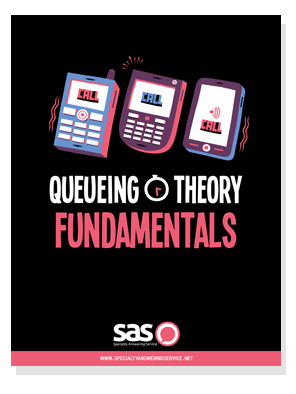- Log In
- Support
- Company
- Contact Us
- Live answers @ 1-888-532-4794
Queueing theory & call centers.
Ever heard of queueing theory? According to Leonard Kleinrock, it’s a type of math that studies the “phenomena of standing, waiting, and serving.” In a nutshell, anytime a queue is formed and served, it can be evaluated using queueing theory. Measurements can be calculated such as the average length of a queue, average time spent in a queue, or the probability that a queue is full or empty.
Queueing theory has now become a practical application in the telecommunications industry. Those who study this theory strive to obtain as close a model as possible to real world systems in order to predict their behavior and consequently improve their performance. Performance measures are an invaluable tool to call centers, providing results that can be analyzed to help businesses run at an optimal level.
This white paper will explore the following:
- An intro to queueing theory
- Queueing models in call centers
- Developing a queueing model
- Queueing theory limitations
How about a demo?
We'll show you how our web portal works and answer any questions you have about SAS.
Schedule a demo








